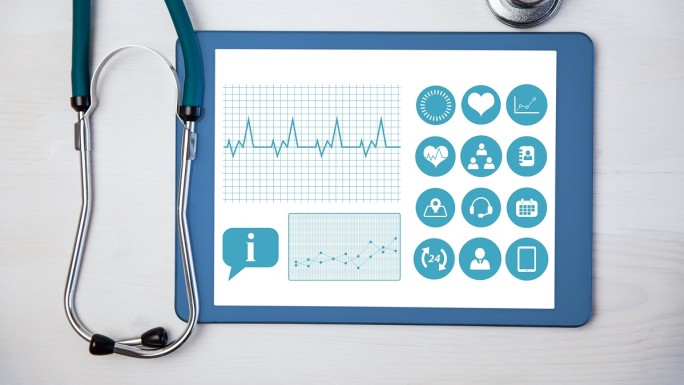Top 9 Healthcare Cybersecurity Compliance Standards
Digital technology has opened up a new world for healthcare providers. All the complexity of the healthcare process now can be handled by smart devices, saving time and resources. But this innovation is still brand new, meaning it contains a lot of potential for healthcare insecurity such as ransomware, medical device attacks, or information theft.
Today, let’s explore the effort against cybercrimes through healthcare cybersecurity compliance standards. Let's find out what they are and why so many healthcare providers use them as effective security tools.

What is healthcare cybersecurity compliance?
Healthcare cybersecurity compliance refers to the adherence to established standards, regulations, and best practices in the realm of cybersecurity within the healthcare industry. Given the sensitive nature of healthcare data, which often includes personal health information (PHI) and electronic health records (EHRs), maintaining robust cybersecurity measures is essential to protect patient privacy, ensure data integrity, and safeguard against cyber threats.
Why is healthcare cybersecurity compliance important to healthcare providers?
Here are some reasons why healthcare providers should have cybersecurity compliance in their healthcare IT system:
Patient data protection
Healthcare providers handle sensitive patient information, including electronic health records (EHRs) and personal health information (PHI). Cybersecurity compliance ensures the protection of this information from unauthorized access, protecting patient privacy.
Legal and regulatory requirements
Compliance with the Health Insurance Portability and Accountability Act (HIPAA) is mandatory for healthcare providers. HIPAA establishes standards for the security and privacy of patient data, and non-compliance can result in legal consequences, fines, and sanctions.
Read more: The Change Healthcare Data Breach: A True Case Study In Healthcare Cybersecurity
Avoidance of data breaches
Cybersecurity compliance measures are designed to prevent and mitigate the impact of data breaches. Unauthorized access to patient records can lead to the exposure of sensitive information and compromise patient safety.
Patient Trust and Reputation
Demonstrating adherence to cybersecurity standards builds patient trust. A healthcare provider's reputation is closely tied to its ability to safeguard patient data, and compliance with cybersecurity regulations is a key component of maintaining a positive image.
Continuity of Patient Care
Cybersecurity compliance measures help prevent disruptions to healthcare services caused by cyberattacks. The uninterrupted availability of critical systems is essential for the seamless delivery of patient care.
Liability Mitigation
Non-compliance with cybersecurity regulations exposes healthcare providers to legal and financial risks. Proactive compliance measures help mitigate these risks and protect the organization from potential legal consequences.
Adherence to Industry Standards
Cybersecurity compliance often involves adopting industry-recognized best practices. Adhering to these standards not only ensures legal compliance but also demonstrates a commitment to maintaining a high level of security.
Protection Against Cyber Threats
Compliance measures are designed to mitigate the risks posed by various cyber threats, including malware, ransomware, and phishing attacks. Proactively addressing these risks helps protect patient data and critical healthcare systems.
Incident Response Preparedness
Cybersecurity compliance involves having an incident response plan in place. This ensures that healthcare providers can respond promptly and effectively in the event of a cybersecurity incident, minimizing potential damage.
Integration with the Healthcare Ecosystem
Compliance with cybersecurity standards facilitates interoperability with other healthcare entities, supporting secure data exchange and collaboration within the healthcare ecosystem.
Financial Impact
Implementing cybersecurity compliance measures can lead to cost reductions associated with data breaches, legal fees, and regulatory fines. Preventing incidents is more cost-effective than dealing with their aftermath.
Patient Safety
Cybersecurity compliance contributes to the accuracy and reliability of patient health information, directly impacting patient safety by reducing the risk of errors and ensuring the integrity of medical data.
Top 9 popular healthcare cybersecurity compliance standards
Many compliances have been created to ensure the security of healthcare technology. They have proved their ability to protect healthcare information and contagious security to the healthcare ecosystem. Below are 9 new and popular healthcare cybersecurity standards that have gained the trust of many healthcare providers and IT healthcare from all over the world.

HIPAA (Health Insurance Portability and Accountability Act)
Purpose: HIPAA sets standards for the protection of patient health information (PHI) and ensures the confidentiality, integrity, and availability of electronic PHI (ePHI).
Key Requirements:
Security rule: Establishes national standards for protecting ePHI that is created, received, maintained, or transmitted electronically.
Privacy rule: Governs the use and disclosure of PHI, outlining the rights of individuals regarding their health information.
Application areas: the United States
HITECH Act (Health Information Technology for Economic and Clinical Health)
Purpose: The HITECH Act addresses the adoption of s and strengthens HIPAA by introducing additional provisions and penalties for non-compliance.
Key components: Requires covered entities to notify individuals and the Department of Health and Human Services (HHS) in the event of a breach involving unsecured ePHI.
Application areas: the United States
HITECH Meaningful Use
Purpose: Part of the HITECH Act, the Meaningful Use program encourages healthcare providers to adopt electronic health records (EHRs) while ensuring the secure use and exchange of health information.
Application areas: the United States
HITECH Omnibus Rule
Purpose: The Omnibus Rule modifies and finalizes certain provisions of the HITECH Act, including extending the application of certain HIPAA provisions to business associates.
Key elements:
Expands the definition of business associates.
Strengthens patient rights regarding access to their health information.
Application areas: the United States
ISO/IEC 27001
Purpose: The ISO/IEC 27001 standard provides a framework for establishing, implementing, maintaining, and continually improving an information security management system (ISMS).
Key requirements:
Risk assessment and management.
Security policies and procedures.
Application areas: Worldwide
NIST Cybersecurity Framework
Purpose: Developed by the National Institute of Standards and Technology (NIST), the framework provides guidelines for improving cybersecurity risk management across critical infrastructure sectors, including healthcare.
Key functions:
Identify, Protect, Detect, Respond, Recover.
Application areas: the United States
FISMA (Federal Information Security Modernization Act)
Purpose: FISMA mandates federal agencies to develop, document, and implement information security programs, including risk management processes.
Key requirements:
Periodic risk assessments.
Security categorization of information systems.
Application areas: the United States
GDPR (General Data Protection Regulation)
Purpose: While originating in the European Union, GDPR can have implications for healthcare organizations globally when handling the personal data of EU residents.
Key principles:
Data protection by design and by default.
Right to erasure (right to be forgotten).
Application areas: the European Union
COBIT (Control Objectives for Information and Related Technologies)
Purpose: COBIT is a framework for developing, implementing, monitoring, and improving information technology governance and management practices.
Key components:
Aligning IT with business goals and ensuring IT risk management.
Application areas: Worldwide
Conclusion
Healthcare cybersecurity compliance and standards are multifaceted imperatives that involve legal obligations, patient trust, and the operational resilience of healthcare providers. It is not only a regulatory requirement but also a proactive strategy to protect patients, preserve reputation, and maintain the stability of healthcare services. In addition to developing an efficient system, healthcare cybersecurity is another important part that providers should follow. We hope this article can bring a basic insight into what healthcare cybersecurity standards can benefit those looking for a healthcare cybersecurity solution.









